Understand the World
What do you know about Australia Day
Published
5 years agoon
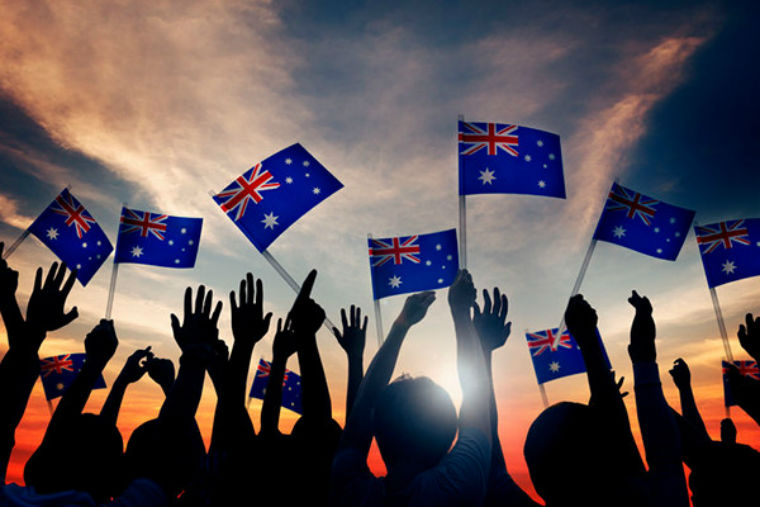
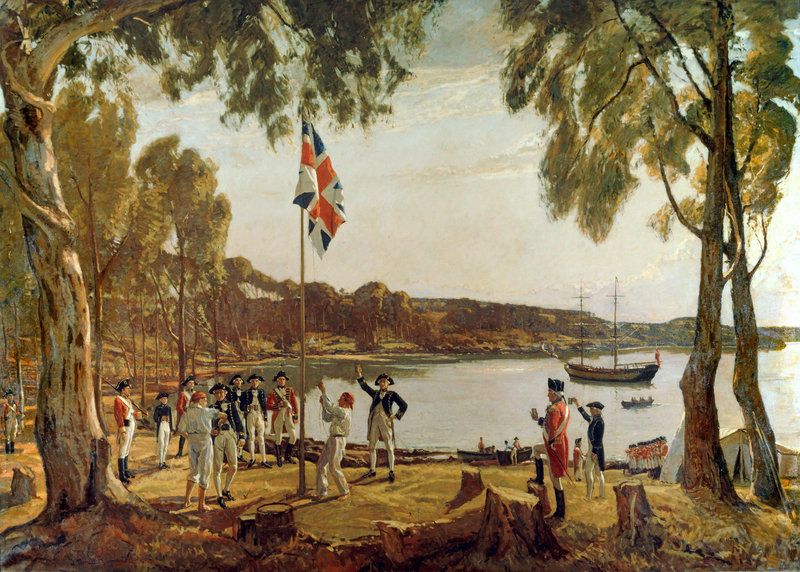
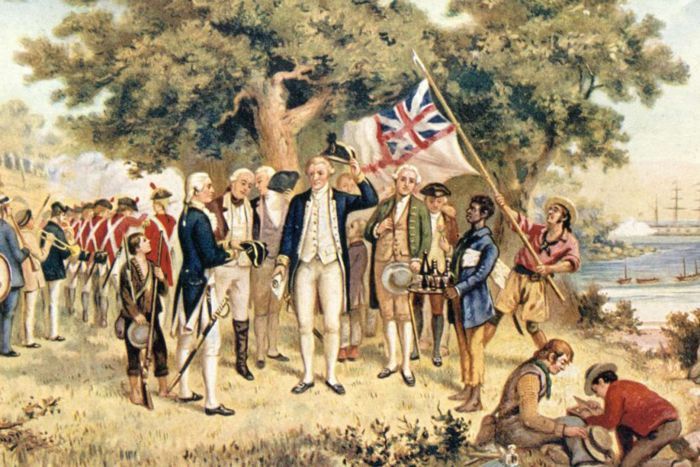
Captain Arthur Phillip took formal possession of the colony of New South Wales on 26 January 1788 and raised the British flag for the first time in Sydney Cove.
In 1818, on the 30th anniversary of the founding of the colony, the Governor of New South Wales gave all government employees a holiday (but only in that year).
Initially, it was only New South Wales that celebrated the day (for obvious reasons), and it was known as ‘First Landing Day’, ‘Anniversary Day’ or ‘Foundation Day’.
In 1838, 50 years after the First Fleet arrived, Foundation Day was declared Australia’s first public holiday in New South Wales.
By 1935, January 26 was known as Australia Day in all states except New South Wales where the name ‘Anniversary Day’ prevailed.
In 1946 the Commonwealth and state governments agreed to unify the celebrations on January 26 and call it ‘Australia Day’.
Before 1994 Australia Day was the closest Monday to January 26 to ensure a long weekend. Since 1994, Australia Day has been a public holiday throughout the country.
Why do we celebrate Australia Day?
Since 1994 all states and territories celebrate Australia Day together on the actual day. On this day ceremonies welcome new citizens or honour people who did a great service.
On the fun side are BBQs, contests, parades, performances, fireworks and more.
A National Australia Day Council, founded in 1979, views Australia Day as “a day to reflect on what we have achieved and what we can be proud of in our great nation” and a “day for us to re-commit to making Australia an even better place for the generations to come”.
You may like

“Those who use force to feign benevolence are tyrants; tyrants must have great nations. Those who practice benevolence through virtue are kings; kings need not be great—Tang ruled with seventy miles, and King Wen with a hundred miles. Those who subdue others by force do not win their hearts; their strength is insufficient. Those who subdue others through virtue win their hearts and gain their sincere submission, like the seventy disciples who submitted to Confucius!”
—Mencius: Gongsun Chou
On June 21, U.S. warplanes crossed the Atlantic and launched precision airstrikes on three key Iranian nuclear facilities—Fordow, Natanz, and Isfahan—in an operation codenamed “Midnight Hammer,” shocking the world. Three days after the strike, the NATO summit in The Hague opened, and Europe finally approved an unprecedented plan to increase defense spending—NATO allies committed to raising defense spending to 5% of GDP over the next 10 years, far exceeding the current 2% guideline. Recently, International Atomic Energy Agency Director General Rafael Grossi stated that despite attacks on multiple Iranian nuclear facilities by the United States and Israel, Iran is likely to resume uranium enrichment “within months.” The complex consequences of the U.S. airstrikes on Iranian nuclear facilities remain to be assessed over time.

Consequences of the strikes remain unclear
In addition to the U.S. strikes on three Iranian nuclear facilities, Israel carried out preemptive strikes on Iranian nuclear facilities, military sites, and personnel between June 13 and 24, causing further damage to Iran. Recently, Israel has been negotiating with Hamas to reach an agreement. Mediators in the Gaza Strip are in contact with Israel and Hamas, hoping that Gaza can also follow the momentum of the ceasefire between Israel and Iran. Trump publicly stated that he believes both sides may reach a ceasefire agreement within seven days.
However, Iran does not seem to have responded positively to the possibility of the United States easing its “strong” sanctions. Instead, Khamenei issued his first public statement after the war, declaring “victory over the U.S. regime.” Since the war began, Khamenei has not been seen in public. Following this statement, Trump immediately abandoned all efforts to ease sanctions and other matters. The Iranian Foreign Ministry has not yet responded to this.
Following the “Midnight Hammer” operation, Trump stated at a White House press conference that Iran’s nuclear facilities had been destroyed and that he did not believe Iran would ‘quickly’ resume nuclear weapons activities. However, International Atomic Energy Agency Director General Grossi stated that despite attacks on multiple Iranian nuclear facilities by the United States and Israel, Iran could likely begin producing enriched uranium “within months.”
After all, it remains unclear whether Iran was able to transfer part or all of its approximately 408.6 kilograms of highly enriched uranium stockpile before the attacks. This uranium is enriched to 60%, above civilian levels but still below weapons-grade. If further refined, it would be sufficient to produce more than nine nuclear bombs.
Trump insists that Iran’s nuclear program has been set back “decades.” Iranian Foreign Minister Zarif stated that the damage to the nuclear facilities is “severe,” but specific details remain unclear. What is even more concerning is that the bombing of Iran’s nuclear and military facilities may result in long-term ecological damage. Soil contamination in military conflicts is one of the most severe yet often overlooked environmental consequences of war. These harmful substances often remain in the topsoil for decades, severely damaging soil quality, including its fertility and natural regenerative capacity. The consequences of Iran’s last war already forced millions of people to migrate.
A wake-up call for China
Trump’s recent strikes against Iran not only demonstrate U.S. military hegemony in the Middle East but also highlight its role as the only global power capable of unilateral action: B-2 bombers flying thousands of miles from Whiteman Air Force Base in Missouri to strike Iran showcase America’s global power projection capabilities. This strike reinforces the United States’ prestige as the global hegemon, reminding the international community that the United States remains the most powerful player today. If the United States can precisely strike Iran’s nuclear facilities, which are highly fortified targets, then by extension, it also has the capability to strike China’s military facilities to strengthen the protection of its allies.
China maintained diplomatic restraint after the U.S. airstrike on Iran’s nuclear facilities and did not take any substantive actions to support Iran. As an ally of Israel, the United States has intervened militarily in Iran using its powerful military strength; as a close partner of Iran, China can only call for de-escalation, lacking substantive leverage to avoid being drawn into the conflict. This contrast highlights China’s lack of influence in the Middle East—despite its growing economic interests in the region, it is not a major security actor, limiting its role.
The resurgence of U.S. power has undermined the Chinese political elite’s claim of “the rise of the East and the decline of the West,” as well as the appeal of China’s proposed “alternative global order.” China’s restraint and low profile in the Iran crisis reflect the limitations of its global influence, which is also why China seeks to position itself as a stabilizing force, contrasting with Trump’s “America First” policy. Although the United States deployed B-2 bombers to demonstrate its military strength, the focus was on Iran and Israel, so China will not immediately alter its Taiwan strategy unless the United States explicitly links the two regions. The “Midnight Hammer” operation at most serves as a deterrent from the United States toward China.
China seeks stability and opposes the use of military means to resolve any type of conflict or confrontation, regardless of the parties involved, and there are reasons for this. After all, over half of China’s crude oil imports depend on the Middle East, and China is the largest consumer of Iranian oil. A prolonged war would disrupt its oil supply, and an Iranian blockade of the strategically important Strait of Hormuz would have the same consequences. During this period, China’s greatest concern is avoiding the threat of “soaring oil prices” to its energy security. Only by positioning itself as a potential mediator and rational voice amid the escalating regional crisis can China indirectly safeguard its investments, trade, and business operations amid the turmoil.
Europe’s Ambiguous Shift in Attitude
European countries have sharp divisions over Israel’s actions in the Gaza war, with many European citizens strongly opposing them on humanitarian grounds. Over the past few months, Israel’s far-right government has been isolated in Europe, and Netanyahu has become the subject of an arrest warrant from the International Criminal Court. Two ministers, Smotrich and Ben-Gvir, have been sanctioned by the UK, with some EU countries planning to follow suit. However, European parties generally acknowledge that Iran’s nuclear program poses an existential threat to European security.
Since the airstrikes began, the UK, France, and Germany have publicly acknowledged that Iran’s nuclear weapons pose a threat not only to Israel but also to Europe. European countries have not issued major condemnations of the airstrikes targeting Iran’s nuclear capabilities. For instance, UK Prime Minister Keir Starmer called for de-escalation but mentioned the UK’s “long-standing concerns” about Iran’s nuclear program. In this context, Iran has now placed the Gaza war on the back burner. This marks a major diplomatic victory for Israel in European strategic thinking, separating the Iranian nuclear issue from the Palestinian issue and paving the way for the Netanyahu government to gain some legitimacy on the European continent.
Actions speak louder than words. At the recently concluded NATO summit, NATO member states committed to increasing defense spending to 5% of their respective GDPs. Of course, European countries are attempting to balance the currently contentious US-EU tariff and trade issues by purchasing more US defense-related products. However, this commitment clearly signals that Europe tacitly approves of the U.S. airstrikes on Iran. This is closely tied to the EU’s deep dependence on the U.S., particularly in security matters. Even if the EU disagrees with many U.S. policies, including the imposition of significant tariffs, it is likely to seek compromise with the U.S. due to a “fear of the U.S.” and cultural affinity with it.
Of course, there are still voices claiming that the U.S.’s military action constitutes an outright violation of Iran’s sovereignty, security, and territorial integrity, and sends a wrong signal to the world that disputes can be resolved through force. Although Iran does not yet possess nuclear weapons, it is clear that it has the capability to produce them. Despite Iran’s repeated denials of any intent to develop nuclear weapons, certain aspects of its nuclear program, such as uranium enrichment, have raised concerns within the international community. Actions speak louder than words. Additionally, reports indicate that Douglas McGregor, a former U.S. Department of Defense advisor and retired colonel, stated on the social media platform X that the U.S. had warned Iran two hours before bombing its nuclear facilities that an attack was imminent.
Additionally, days before Trump decided to destroy Iran’s nuclear weapons program, the Islamic Republic of Iran acknowledged that it had hundreds of sleeper cells within the United States, ready to launch attacks at any time. Under Article 51 of the United Nations Charter, the intent to infiltrate sleeper cells for terrorist attacks is classified as an “armed attack,” thereby acknowledging the right to self-defense. Iran’s acknowledgment a few days before Trump’s decision to destroy its nuclear weapons program easily provided a legitimate justification for the attack. The U.S.’s decision to severely damage Iran’s nuclear facilities at this time was “a natural consequence.”
The ever-present human conflict
The U.S. airstrike on Iran compels people to reflect on whether the use of force to end war remains an option that cannot be abandoned in today’s international society. Sociologist Charles Tilly once said that war creates nations, and nations create war. In international relations, there are naturally “rules of the game” such as international treaties, the principle of sovereignty, and the supremacy of human rights; however, the frequent conflicts between different political systems and the trends of various local wars in recent years have repeatedly forced those who harbor good intentions toward humanity to recognize the importance of “power.”
The airstrike on Iran’s nuclear facilities, coupled with the safe withdrawal of all U.S. aircraft from Iranian airspace, once again demonstrates that the United States continues to play a significant role on the international stage, particularly in the military domain, and its formidable strength is widely recognized worldwide. Additionally, this operation marks Trump taking an action he had long vowed to avoid: military intervention in a major foreign war. In this interconnected age, complete non-intervention is impossible. The issue lies in whether intervention in war is controlled by political authorities such as nations or international institutions: whether the purpose is to end the war or to assist one side or the other in the war; and through what means the aforementioned purpose is achieved.
The philosophical debate over the relationship between “purpose” and “means” has never ceased. Taking war as an example, the party that initiates the war is naturally unjust. If the opposing side then resists with force, being drawn into this forced war, their resistance is an unavoidable response, and their purpose is to stop the war. Is such resistance a necessary—or even moral—means? Contemporary conflicts and wars are endless and difficult to resolve, as if trapped in a circular argument of “the chicken or the egg,” unable to escape.
War has never completely disappeared from human history; various forms of conflict and violence have continued to occur. Any rational person opposes war. Therefore, the focus should not be on “anti-war” rhetoric, but on how to confront war—especially “war that is forced upon us.” The vast majority of people yearn for peace. The problem is that no matter how much we advocate against war or emphasize peace, there will always be those who seek to wage war for personal gain. This forces us to confront war that is forced upon us. The first priority in facing such a war is prevention. However, if prevention fails and war breaks out, the ability to resist war still lies in strength.
Article/Editorial Department, Sameway Magazine
Photo/Internet
Features
Abuse of Protection Visas Government Speeds Up Review Process to Benefit Genuine Refugees
Published
3 months agoon
July 2, 2025
As a signatory to human rights conventions, Australia has a protection visa system that allows people who are persecuted around the world to apply for asylum after arriving in Australia legally. However, this system is currently being abused, with the number of protection visa applications increasing significantly, resulting in applicants often having to wait for years. Whether the Australian government’s reforms to the protection visa application process will be successful remains to be seen.



Who is eligible?
Following the 2019 anti-extradition movement, hundreds of thousands of Hong Kong residents have left their homes in search of a freer and more stable future. As one of the countries operating under a democratic system, Australia boasts a robust social welfare system and a high standard of living, attracting many young people to come to Australia through student, working holiday, or short-term work visas. However, as their original visas approach expiration, many individuals, lacking sufficient information or driven by emotional anxiety, are misguided toward another “immigration shortcut”—the Protection Visa (Protection Visa, Category 866).
As of 2024, over 580 people from Hong Kong have applied for this Protection Visa, with only 5 successful approvals. This indicates that many applicants lack understanding of the visa requirements and relevant legal standards. Under Australian law, only those who can prove they face clear and specific risks of persecution—such as threats to personal safety, imprisonment, or torture—qualify for asylum under the Refugee Convention. What constitutes such risks varies from person to person. The Australian Department of Immigration advises those considering this option to seek professional immigration lawyer assistance rather than making unilateral assumptions or being influenced by unlicensed immigration advisors.
Many young people who participated in the 2019 protests have considered applying for this visa. They may currently be in Australia on various visas, but they fear political retaliation upon returning to Hong Kong, even if they have not faced explicit threats to their personal safety. They are experiencing a form of “psychological persecution” that is difficult to quantify—a long-term fear of the future and restrictions on freedom of speech, as well as concerns about potential reprisals upon returning to Hong Kong. However, these subjective feelings, without concrete evidence to support them, often fail to meet official approval standards.
The “persecution” criteria for protection visas are clearly defined in the system, but some applicants conflate personal psychological stress with systemic persecution, leading to a gap between expectations and actual outcomes. This misunderstanding sometimes stems from misinformation within the community and is also influenced by certain intermediary agencies that package and promote it as a “strategic maneuver” to replace immigration.
The “business” of immigration
The situations in China and Malaysia are different. In recent years, the number of protection visa applications in these two places has significantly increased. Some applicants from China were originally students or tourists, and due to their limited English proficiency, they often view this pathway as “low-threshold immigration option.” This is because applying for this visa does not require an English proficiency test or any technical skills; it only requires a fee of $45, making it a low-cost option. This has led many Chinese students to apply for the 866 protection visa when their student visas are about to expire, as they lack other immigration options. Meanwhile, some Malaysians use this visa as a stepping stone for legal employment. They typically submit protection applications before their student or tourist visas expire, not to seek asylum, but to extend their stay and work in Australia through a bridge visa. Although most of these applications are ultimately rejected during the approval process, the process is often time-consuming, tying up review resources and sparking concerns about the abuse of the protection system.
From Hong Kong residents’ ignorance and misunderstanding of protection visas to Chinese and Malaysian applicants disregarding the visa’s original purpose and using it to extend their stay and work legally, the credibility and legitimacy of the protection visa system have been gradually eroded. What was intended as a humanitarian aid system has gradually evolved into what some view as an “immigration backdoor.”
The Original Intent and Degeneration of the Asylum System
The Protection Visa (Protection Visa, Category 866) is intended to provide asylum and permanent residency opportunities for those who face the risk of persecution in their home countries due to race, religion, nationality, membership in a particular social group, or political opinion. As long as these individuals are already in Australia, they may apply for asylum. If they provide sufficient evidence to demonstrate that returning to their home country would expose them to life-threatening risks, torture, imprisonment, or other severe human rights violations, they may be granted asylum and permanent residency in Australia.
Such a system was originally intended to safeguard human dignity. However, over time, it has begun to be viewed by some as a “tool for extending stay.” . The approval process is already cumbersome, with each case requiring individual investigation, document verification, and interviews, often taking years to process. During this period, applicants are issued a Bridging Visa, allowing them to legally reside, work, and live with the same freedoms as ordinary residents.
This “waiting period,” from a certain perspective, has become a form of “alternative residency period” that does not require eligibility review.
What is even more concerning is that even if the application is ultimately rejected, the applicant may appeal, and the case will then enter the Administrative Appeals Tribunal (AAT) process. If dissatisfied, the applicant may further appeal to the Federal Court, extending the process by several years and once again prolonging the residency period. While the openness of this legal pathway is intended to be a safeguard of democratic institutions, it has, in practice, become an abused “delay tactic.”
Among various visa categories, the protection visa, which does not require skill, language, or financial thresholds, has become the “easiest to apply for and most likely to be extended” option in the eyes of many students and short-term workers in Australia. Compared to the technical immigration visa, which requires academic qualifications and occupational assessments, or the business investment visa, which demands substantial financial guarantees, the protection visa appears to require only a $45 processing fee, a statement, and some supporting documents to initiate the process. However, this “low-threshold” appearance often masks the high review standards behind it. The actual approval process still relies on the definitions in the Refugee Convention and international law to determine whether the applicant faces genuine and unavoidable persecution risks. The reviews conducted by the immigration department and courts are even more rigorous, often taking years and consuming significant resources.
Many individuals who originally came to Australia for education, when their courses are about to end and their visas are about to expire, may choose to apply for a protection visa to extend their stay and secure legal work rights if they are unable to successfully apply for skilled migration or switch to another visa. Many of them come from countries such as China, India, and Malaysia, with some having been misled by intermediaries into believing this is a viable “residence strategy.” For some students with limited family financial resources, staying in Australia for an additional two or three years, working legally, and sending money back home may be sufficient to recoup their costs, even if they are ultimately denied and neither they nor their families can ever return to Australia. They may still feel it is “worth a try.”
Is there really no cost involved?
For those applying for the 866 protection visa, there are indeed costs involved. First, during the waiting period, they will obtain a bridging visa, but this does not necessarily grant them work rights. For example, individuals who originally held tourist visas without work rights must still cover their own living expenses, have no access to medical insurance, and face significant challenges in daily life.
Additionally, during the waiting period, they cannot leave Australia. Those approved cannot return to their original country of residence (this is understandable, as they claim to be persecuted and cannot simply return). Many are thus separated from their families for an extended period, something they did not initially anticipate.
If the application for a protection visa is unsuccessful and there are no other valid visas available, these individuals may be deported, and some may be required to stay in detention centers. Additionally, they may owe the Australian government certain fees upon departure, which must be settled before they can leave. Many have found that the income earned during this period is significantly reduced as a result.
Furthermore, applicants must pay substantial fees to intermediaries and immigration lawyers to represent them in their applications and appeals. This is precisely the scam employed by unlicensed immigration consultants. There have been unscrupulous intermediaries in Malaysia and other countries openly soliciting “customers” to come to Australia through this route. Ultimately, it is these young people seeking opportunities who bear the costs.
In the long term, those whose protection visa applications are rejected will have a permanent record on file with the immigration authorities, making it extremely difficult for them and their families to apply for other visas and return to Australia in the future. For many, this has a severely detrimental impact.
What are the chances of success?
According to the final approval data for permanent protection visas in the 2023–24 fiscal year, 304 applicants from China were approved, resulting in an approval rate of just 10.16%; Malaysia had 257 approvals, with an approval rate of 22.99%. In contrast, out of 900 applications from Myanmar, the approval rate reached a staggering 99.45%. This significant disparity indicates that the proportion of applicants from certain countries who genuinely meet the definition of the Refugee Convention is extremely low, highlighting the misuse or even abuse of the system.
Moreover, this “delay-based residency” mindset is beginning to influence short-term visitors who originally had no intention of immigrating. They may have simply wanted to earn money in Australia, but found that protection visas have become a low-cost, high-return workaround. Such abuse not only overloads the overall review system but also delays the approval of other cases.
The system was originally well-intentioned, but when loopholes in the system are exploited, that goodwill gradually deteriorates. Protection visas have evolved from a last line of humanitarian defense into a “de facto immigration channel” in the eyes of some. This leaves those who truly need assistance facing even longer and more burdensome waits.
What’s next for the government?
As the number of protection visa applications continues to rise and approval backlogs worsen, the Australian government has gradually recognized the potential misuse of the system and began implementing reforms and tightening measures in 2024 to reduce approval times.
The government has implemented multi-faceted policies to combat the abuse of protection visas. During the Liberal Party’s tenure, the number of applications surged from thousands to tens of thousands, yet the government ignored the situation, resulting in cases taking years to process, allowing abusers to exploit the system. However, starting in 2024, the government significantly increased the staff handling such visas and established the principle of prioritizing new cases, reducing the waiting time for visas to one-eighth of the original duration. Many cases were completed within weeks or months, significantly reducing the waiting time for applicants to remain in Australia.
The Australian government has also launched community outreach campaigns to educate prospective applicants for protection visas about the potential consequences of abuse and to avoid being misled by intermediaries. Additionally, the Australian government offers assistance to applicants who voluntarily withdraw their applications and communicates with their home countries to ensure they will not face punishment upon return.
Conclusion
A protection visa originally designed to assist individuals facing persecution and extreme hardship has been widely abused due to unscrupulous business practices, leaving those who truly need assistance unable to receive it, which is regrettable. However, as economic migration increasingly becomes the mainstream, this is an unavoidable reality. The Australian government must respond more sensitively to effectively implement its original immigration policies.
Article/Editorial Department, Sameway Magazine
Photo/Internet
Features
Crackdown on Hong Kong Exiles Escalates, and the Ideology of “Strain” is Frightening
Published
5 months agoon
May 18, 2025
Recently, a piece of news in Hong Kong once again triggered a media debate: Anna Kwok Fung-yee, the executive director of the Hong Kong Democratic Foundation, who is wanted by the Hong Kong National Security Bureau for a reward of HK$1 million, has her father and her second elder brother arrested on charges of assisting in the handling of Anna;s funds. While her elder brother has been released on bail pending investigation, and the case is now adjourned until June 13 for further proceedings. This is the first time that the Hong Kong Police Force has invoked the offence of “handling funds belonging to an absconder” under the measures against absconders in the Maintenance of National Security Ordinance to arrest suspects for assisting in the handling of property in Hong Kong belonging to “specified absconders”. One cannot help but wonder, in the 21st century, whether the uncivilized way of governance of “connecting nine clans of the family” has resurfaced again.
The “guilt by association with nine clans” system is a representative system of guilt by association in Chinese history, which originated in the Qin Dynasty and reached its peak in the Ming and Qing Dynasties. The core idea is that if a person commits a crime, all his relatives and associates will be punished. During the Second Qin Dynasty, the prime minister Li Si was framed by Zhao Gao, and not only was he himself chopped into pieces, but his three clans were also executed. After the usurpation of Emperor Zhu Di of the Ming Dynasty, he ordered Fang Xiaoru to draft a document on his accession to the throne, but Fang refused, and as a result, he was punished with the execution of ten of his clans, including students and servants. During the Qing Dynasty, there were a number of cases in which relatives were implicated in the “delusion of the government”, such as the case of Cao Xueqin’s family, the author of The Dream of the Red Mansion, who were executed because of the “Case of Kangxi’s Guiqi”.
The detention of Ms. Kwok’s father pending trial reminds us of the modernization of Hong Kong today, which has not yet left the era of undeveloped people’s wisdom.
Who is Anna Kwok Fung-yee?
Kwok, 28, is an exiled lobbyist in Hong Kong and currently serves as the executive director of the Washington, D.C.-based Hong Kong Democratic Committee: in 2023, she called on the U.S. government to ban Hong Kong Chief Executive Eric Li Ka-chiu from traveling to the United States to attend the Asia-Pacific Economic Cooperation (APEC) summit, and in July 2023 she was put on the Hong Kong National Security Agency’s Most Wanted List, which is a list of 19 overseas activists who are wanted by the police in Hong Kong. In December 2024, Kwok’s Hong Kong status was revoked and she became stateless after she requested the U.S. government to grant her asylum as soon as possible after the warrant was made public. Kwok was accused of violating Hong Kong’s national security law by colluding with foreign or overseas forces to jeopardize national security, and the police offered a HK$1 million reward for her arrest.
According to the information, the National Security Bureau took away Kwok’s parents and two elder brothers on August 8 and 22 of the previous year, respectively, to investigate whether they had any form of contact or financial dealings with Kwok. At the time, Kwok responded on Facebook that her family “has never helped, is not aware of, and does not even know what I do”. She also said that the Hong Kong government was trying to harass her family to silence her in the U.S., but that she would not give up her work to pave the way for Hong Kong’s freedom and self-determination. In recent years, the national security police have repeatedly taken away the family members of wanted Hong Kong residents to assist in investigations, and in the first four months of this year, a total of 14 people have been taken away on nine occasions to assist in investigations. This is the first time a family member has been charged.
The cause of this incident stems from a police investigation, which revealed that Kwok’s father and others had traveled overseas to meet with Anna Kwok , and were suspected of illegally assisting in the handling of Anna’s insurance policies in Hong Kong after returning to Hong Kong. There is also evidence that Kwok’s father attempted to help Kwok to withdraw nearly HK$100,000 in cash balance from the insurance policy, and submitted a number of documents purporting to contain the signatures of both parties to the insurance company early this year. It is worth noting that Kwok’s second brother works for the insurance company, and the police suspect that he used his position and knowledge of the industry to assist in the transfer of the property.

Whose property?
Kwok’s father, Kwok Yin Sang, is reportedly a businessman with three children. One of his children, Ms. Kwok, went to the International School and studied in Norway, and later studied journalism and philosophy at New York University. For someone who can provide such an expensive education for his children, Kwok is believed to be a successful businessman and is presumably well off. On the other hand, how did Anna Kwok have the financial means to support herself, accumulate assets and take out insurance when she never had a high-paying job after graduation? If the insurance policy purchased in her name is regarded as her property and the father is sued under the National Security Law for handling his daughter’s property, is it in line with the spirit of the law, which has raised a lot of questions?
In traditional Chinese society, property is owned and developed by the family. After the death of the head of the family, the next generation will distribute the property among different members of the family according to the principles set by the family leader. In Western societies, individualism is emphasized, so property is distributed in the name of the individual, and Western law is based on this system of private ownership of property. Obviously, it is unlikely that Kwok Fung Yee’s property was accumulated from her income. Therefore, the government’s investigation into the handling of Kwok Fung Yee’s insurance policy, which involved only HK$100,000, is intended to send an important message that family members of fugitives will be prosecuted for any contact with the fugitives.
The Hong Kong Police Force’s action sends a clear message to the community that any attempt to challenge national security will be prosecuted, and those who assist the “specified absconders” will also be subject to legal sanctions, advising family members, friends or associates of absconders not to break the law, and that all absconders should turn back to Hong Kong as soon as possible and give themselves up. According to the existing laws of Hong Kong, handling of funds belonging to the absconders concerned is a serious crime, which is liable to a maximum penalty of seven years’ imprisonment upon conviction.
Crackdown continues to escalate
Since mid-2023, the National Security Bureau of the Hong Kong Police Force has placed 19 Hong Kong residents in exile overseas, including Kwok Fung-yee, on the wanted list. It is alleged that after she left Hong Kong, she attended overseas meetings and activities in her capacity as a key member of the Hong Kong Democratic Committee, and lobbied foreign countries to sanction, blockade and carry out other hostile actions against the governments of China and Hong Kong, suspected to have violated the “collusion with a foreign country or foreign forces to endanger national security” in the Hong Kong National Security Law, and last year, on Christmas Eve, she was even arrested under the commonly known as the “National Security Law” for “colluding with foreign or overseas forces to jeopardize national security”. On Christmas Eve last year, six measures were imposed on Kwok and seven others, including revocation of their HKSAR passports and prohibition of providing them with funds, under the “Article 23” of the “Maintenance of National Security Ordinance”, which is commonly known as “Article 23”.
Kwok’s father, 68-year-old Kwok Yin-sang, is currently being returned to prison so that the prosecution can seize his cell phone and computer. Defense counsel pointed out that the defense needs to confirm whether the assets of the policy belong to Kwok Fung Yee or Kwok’s father, but the prosecution has not been able to do so, so bail has not been granted for the time being. The National Security Law Judge, Chief Magistrate So Wai Tak, subsequently decided to adjourn the case until the middle of next month, during which time the defendant could write to the court if he wished to apply for bail. The Hong Kong Democratic Committee, to which Ms. Kwok belongs, describes this unprecedented action by the Hong Kong government as an escalation of attacks on human rights defenders in the U.S., and urges the U.K. and the U.S. to take appropriate countermeasures.
Undoubtedly, this action highlights the dangerous expansion of Beijing’s complicity, which has been extended to Hong Kong. Blatantly implicating relatives in Hong Kong as a means of suppressing the voices of Hong Kong’s overseas pro-democracy dissidents is in complete defiance of basic human rights and the rule of law. What is even more disturbing is that this case is likely to develop into an ongoing retaliatory campaign against the families of Hong Kong’s exiled pro-democracy activists, a new pattern of intimidation and persecution aimed at spreading fear and suppressing pro-democracy and pro-human rights activities both within Hong Kong and internationally.
At this point, the response and support of the international community is all the more important. If Western countries insist on universal values, they must put pressure on Beijing and the Hong Kong authorities to immediately stop all acts of harassment and intimidation against the families of overseas Hong Kong democrats in Hong Kong. The international community can protect exiled Hong Kong pro-democracy activists and other critics of the Beijing authorities from intimidation and persecution similar to that of the Long Arm if it is determined to take concrete action to hold accountable the officials responsible for the human rights abuses in question, and to put in place a strong legal framework. Otherwise, the escalation of such persecution will only get worse.
The Powerful Influence of Culture
Anyone who knows a little bit about China’s 5,000 years of history will know that while one man’s success is rewarded by the rise of all family members, similarly, one man’s offense will implicate all men. Even in modern times, similar cases of vendetta killings often occur, such as a village headman bullying villagers and the angry headman killing his entire family and even babies in their infancy. This kind of time is rare in Western societies because when modern civilization began, Chinese civilization took a very different path from that of the rest of the world: China continued the tradition of the clan bloodline, which formed the current Chinese civilization, and which is still the nucleus of its civilization even today. Ancient Greece, on the other hand, blew up the clan-blood relationship and established a contractual form of social organization, which is also the originator of modern Western civilization.
There is also the influence of Christian thought on society. The New Testament emphasizes that the sins committed by the father cannot be borne by the children, and that God will not punish the offender’s next generation for these sins. The Bible also emphasizes that each person should be judged by God for his own sins, which laid the foundation for the principle of “guilt by association” in Western law. Especially after the Magna Carta in England, the royal power and the nobility reached a contractual relationship, in which both parties were close to equality, and this relationship was extended to the relationship between the government and the citizens in recent times. This is incomprehensible to the Chinese people who have long been obsessed with imperial power. It is only that today, the Hong Kong government has ignored the application of British law in Hong Kong for over a hundred years, and is now applying in Hong Kong the same uncivilized practices that have existed in China for thousands of years.
In this case, the ownership of the assets handled by Kwok’s father is one of the main points of contention between the prosecution and the defense. The defense pointed out that there is no bail application at this stage, saying that the crux of the case is the father of Kwok allegedly handled the policy, in the end is Kwok Fung Yee or his own assets, it takes time to review the policy, but the prosecution has not been provided, hope that the case is adjourned for a week, and then decide to reply to the direction of the direction and whether or not to apply for bail. Even if the defense can produce relevant evidence, it is not difficult for those who are familiar with the process of interpretation of the law “with Chinese characteristics” to imagine that the prosecution will find a way to make the evidence satisfy the conditions for the establishment of the charges.
However, in contemporary China, the idea of “linking nine clans to one’s family” has long permeated many corners of the country, such as the “political examination” that must be passed in order to get into the civil service, and the idea that “one person committing a crime affects three generations”, although it has no legal basis, has a real impact on real-life considerations. It’s just that birth is not a choice, and the behavior of parents will have an impact on their children, but that’s fate and has nothing to do with the law. The law cannot reinforce parental benevolence, nor can it make children worse off as a result of their parents’ bad luck. However, it will take time for this modern idea of democracy and the rule of law to take root in Chinese society, which has long been steeped in feudalism.
A year ago, the bloodshed in a large shopping center in Bondi Beach, Sydney, shocked the whole of Australia. After the incident, the murderer’s parents spoke out, grieving for the lives lost and pointing out that having a mentally ill child was a nightmare for the parents; they also claimed that they did not resent the policewoman for killing their son, as she was just doing her job. If we think like Chinese people, these parents would not be able to hold their heads up for the rest of their lives, let alone speak out to the media. As a society progresses towards civilization and the rule of law, it is essential to respect the rights of the individual, and the idea of “lumping” a family together should have been swept into the dustbin of history long ago.
Article/Editorial Department, Sameway Magazine
Photo/Internet
Listen Now

QantasLink Considers Closing Staff Bases in Canberra, Hobart, and Mildura
ACMA Issues Warning to “The Kyle and Jackie O Show”
British Primatologist Jane Goodall Passes Away
NSW Police Urged to Stop Strip-Searching People
Israeli Navy Intercepts “Global Sumud” Aid Flotilla; Greta Thunberg Detained

Fraudulent ivermectin studies open up new battleground

Cantonese Mango Sago

FILIPINO: Kung nakakaranas ka ng mga sumusunod na sintomas, mangyaring subukan.
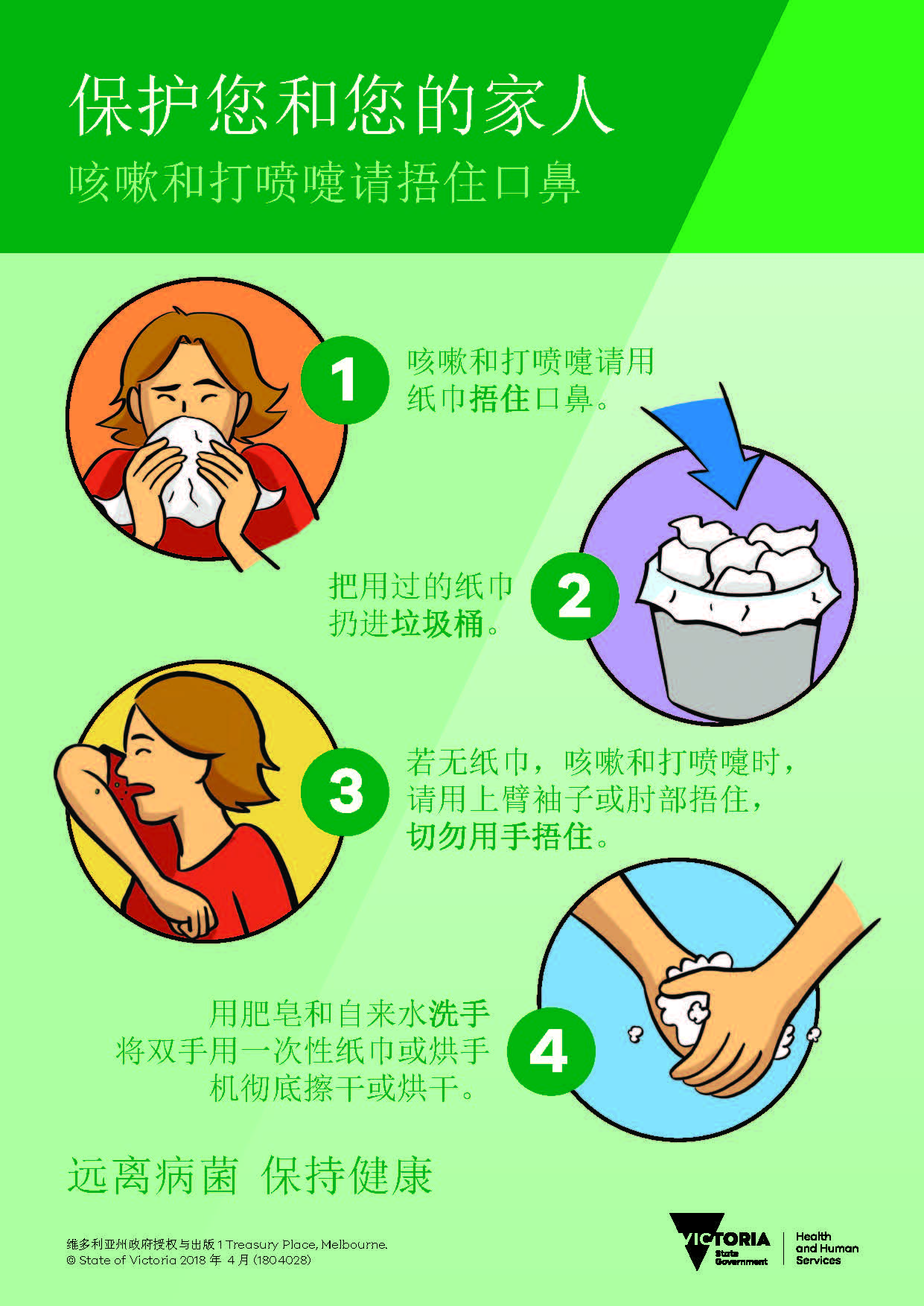
保护您自己和家人 – 咳嗽和打喷嚏时请捂住
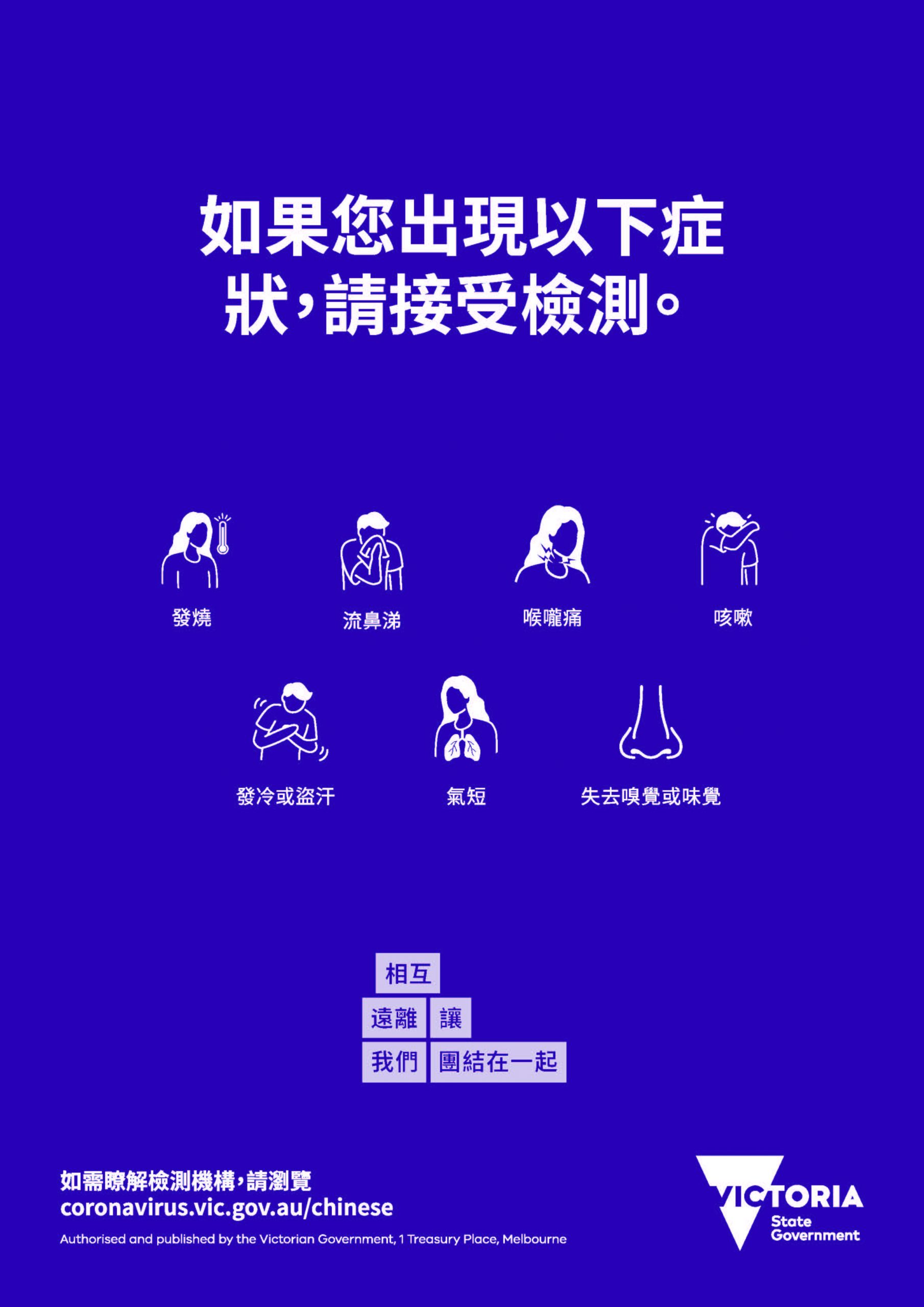
如果您出現以下症狀,請接受檢測。

U.S. Investment Report Criticizes National Security Law, Hong Kong Government Responds Strongly

China Becomes Top Destination for Australian Tourists, But Chinese Visitor Return Slows

What Is the Significance of Victorian Premier Jacinta Allan’s First Visit to China?

Albanese Visit to UK Focuses on Domestic Reform, Not Republican Debate

Optus Faces Another “000” Outage, Singtel Bonus Sparks Controversy
Trending
-

 COVID-19 Around the World4 years ago
COVID-19 Around the World4 years agoFraudulent ivermectin studies open up new battleground
-

 Cuisine Explorer5 years ago
Cuisine Explorer5 years agoCantonese Mango Sago
-

 Tagalog5 years ago
Tagalog5 years agoFILIPINO: Kung nakakaranas ka ng mga sumusunod na sintomas, mangyaring subukan.
-

 Cantonese - Traditional Chinese5 years ago
Cantonese - Traditional Chinese5 years ago保护您自己和家人 – 咳嗽和打喷嚏时请捂住
-

 Uncategorized5 years ago
Uncategorized5 years ago如果您出現以下症狀,請接受檢測。
-
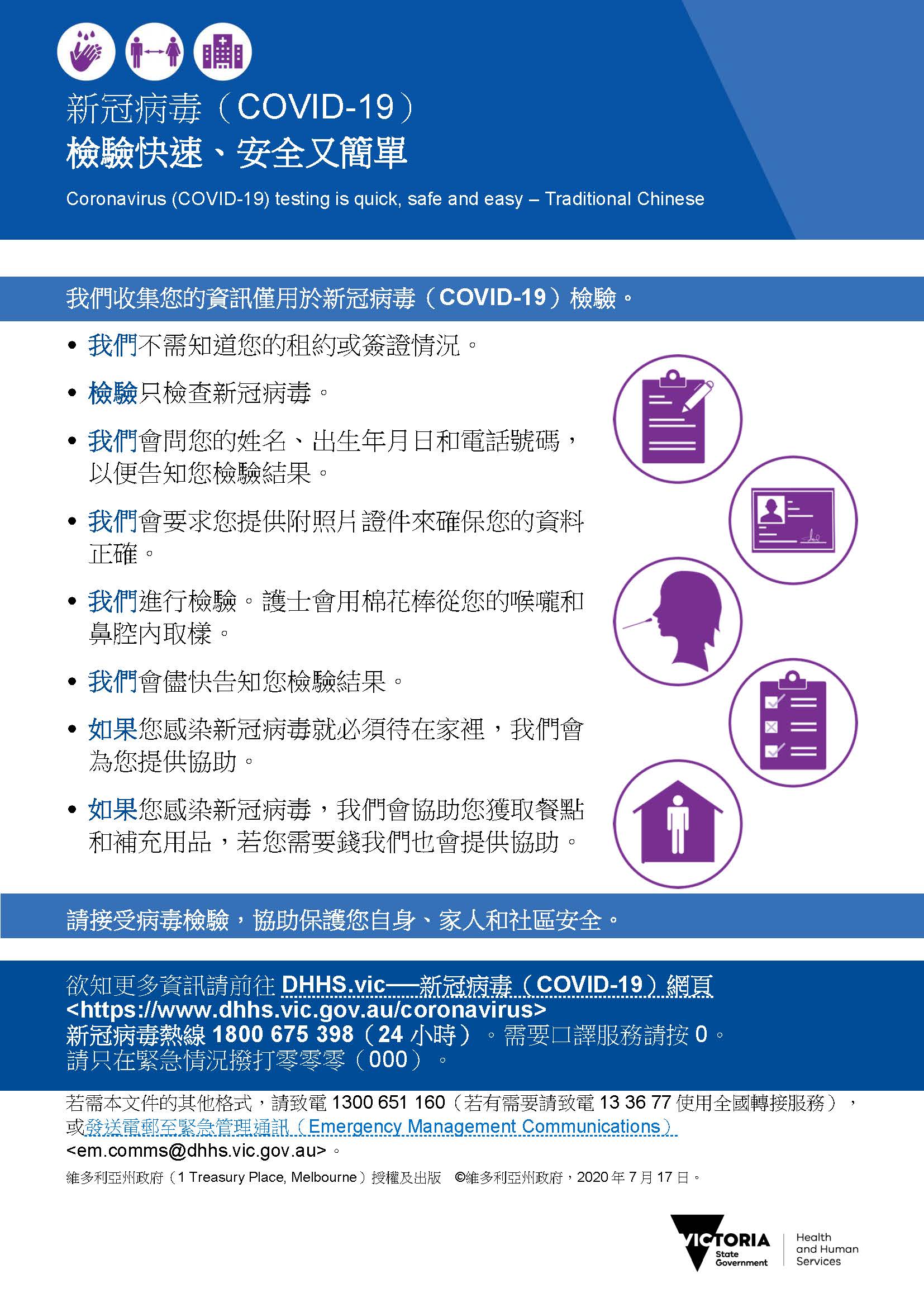
 Uncategorized5 years ago
Uncategorized5 years agoCOVID-19 檢驗快速 安全又簡單
-
Uncategorized5 years ago
在最近的 COVID-19 應對行動中, 維多利亞州並非孤單
-
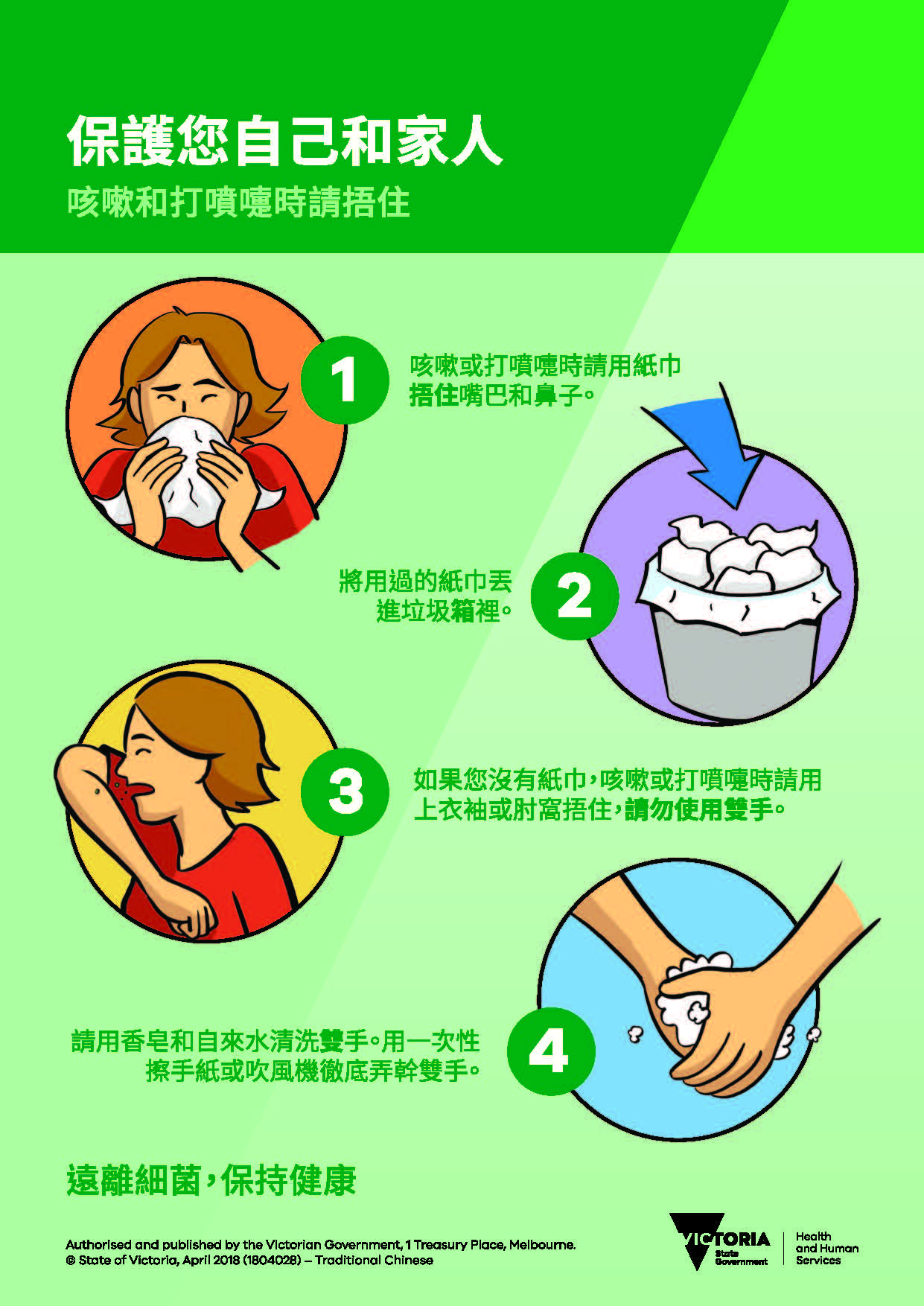
 Cantonese - Traditional Chinese5 years ago
Cantonese - Traditional Chinese5 years ago保護您自己和家人 – 咳嗽和打噴嚏時請捂住



